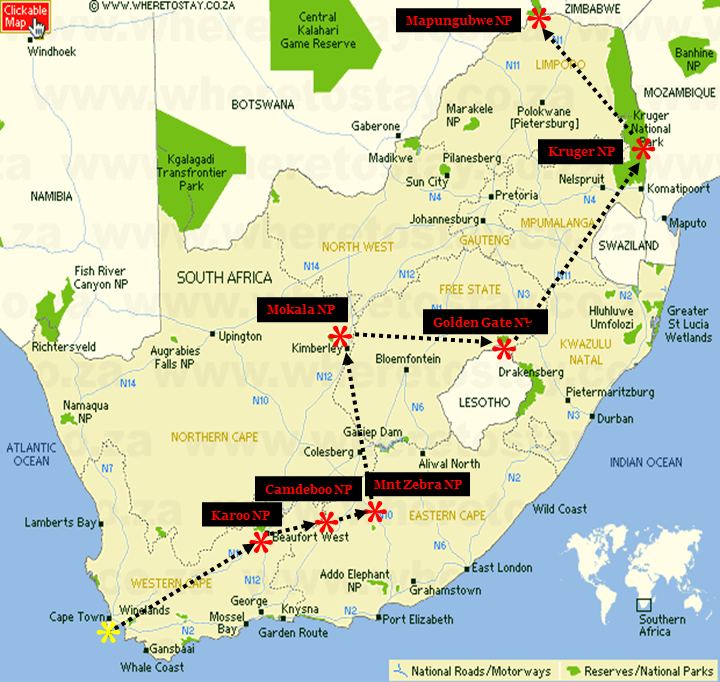
My last stop in South Africa is the UNESCO World Heritage Site Mapungubwe National Park, located in the far northeastern corner of the country near the towns of Alldays and Musina and situated at the confluence of the mighty Limpopo and Shashe Rivers (although the larger Shashe River appears dry at this time), as shown here:

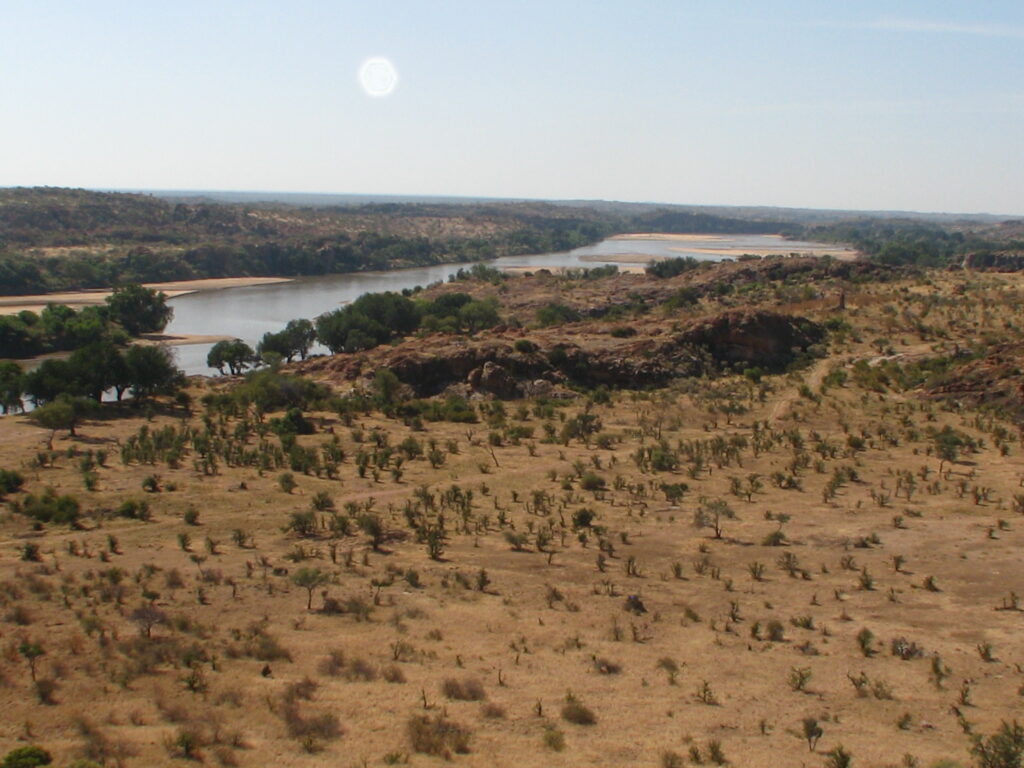
Mapungubwe NP abuts Botswana and Zimbabwe, and forms part of the Greater Mapungubwe Transfrontier Conservation Area. Note, a Transfronteir Park is one in which one or more bordering countries have abutting Parks that cooperate at some level to manage the much larger area as one effective conservation area, under the rationale that bigger is better for wildlife that see no borders.
Mapungubwe (110 sq. mi.), established in 1995, protects the historical site of Mapungubwe Hill, which was the capital of the ancient Kingdom of Mapungubwe, the oldest known kingdom in southern Africa (900-1300 AD), as well as the wildlife and riverine forests along the Limpopo River. Mapungubwe Hill was the site of a prosperous community dating back to the Iron Age. Archaeologists also uncovered the famous golden rhino figurine from the site. Here is a shot of the famous Hill:
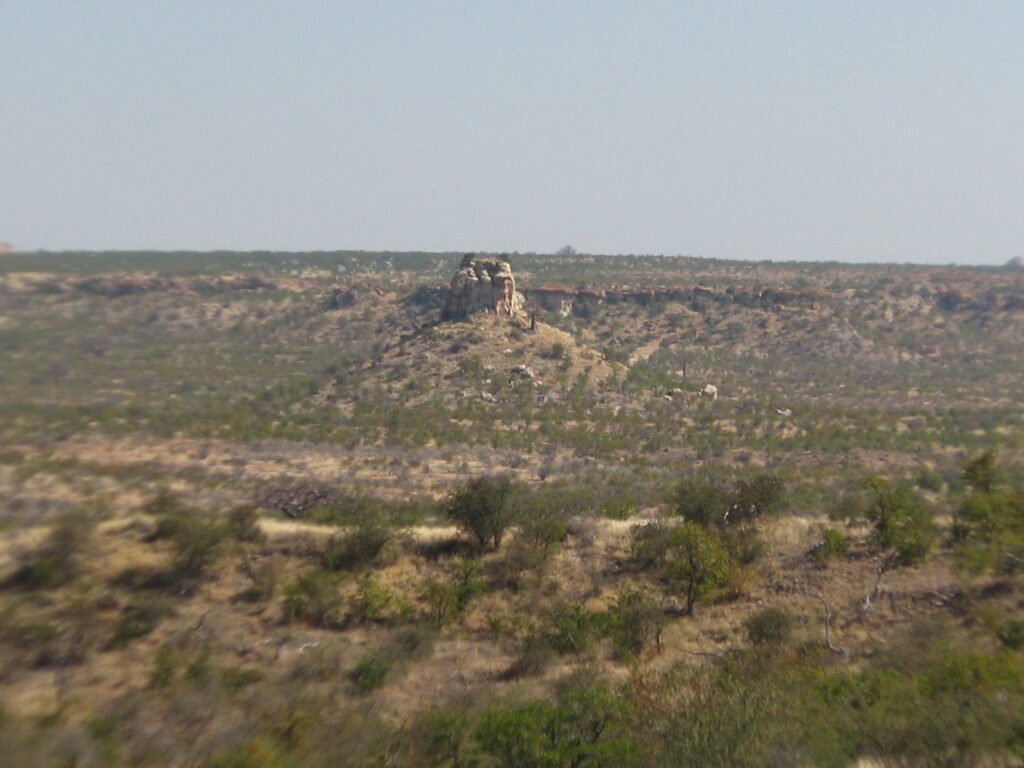
Mapungubwe is also renowned for its scenic landscape, with sandstone formations, woodlands, riverine forest and baobab trees (more on these special trees later). Despite its World Heritage status, Mapungubwe is threatened by the development of an open-cast coal mine in the Park’s buffer zone – argh! Here are a few shots of the scenic rock formations, acacia scrublands and mopane woodlands in the uplands:
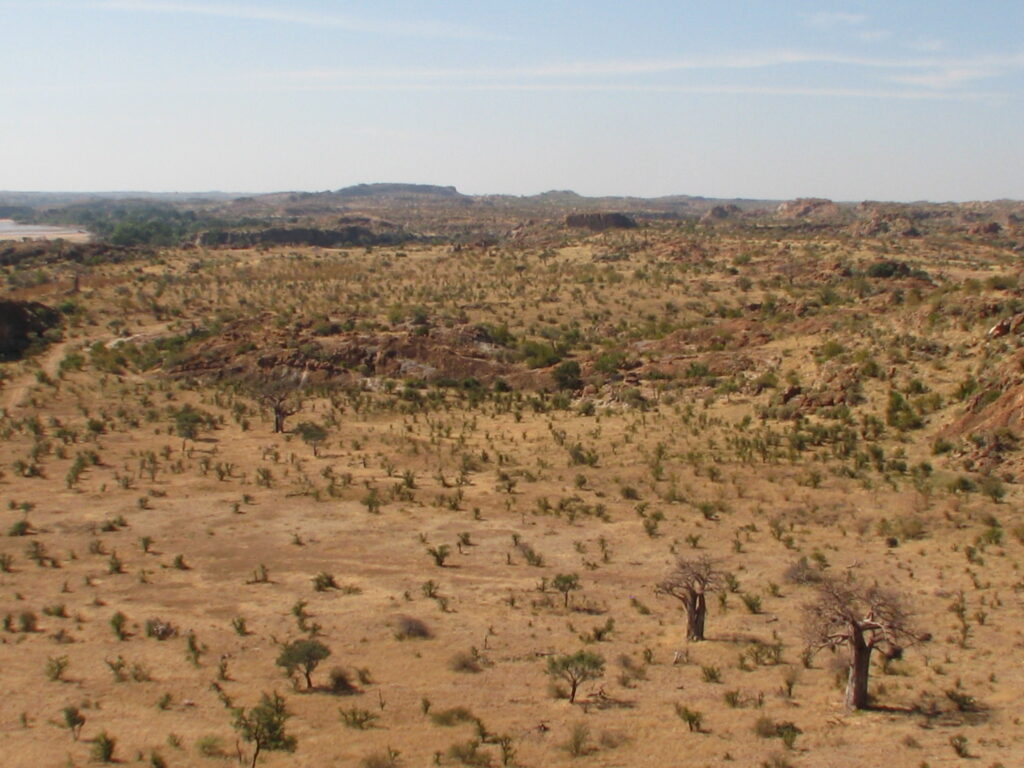

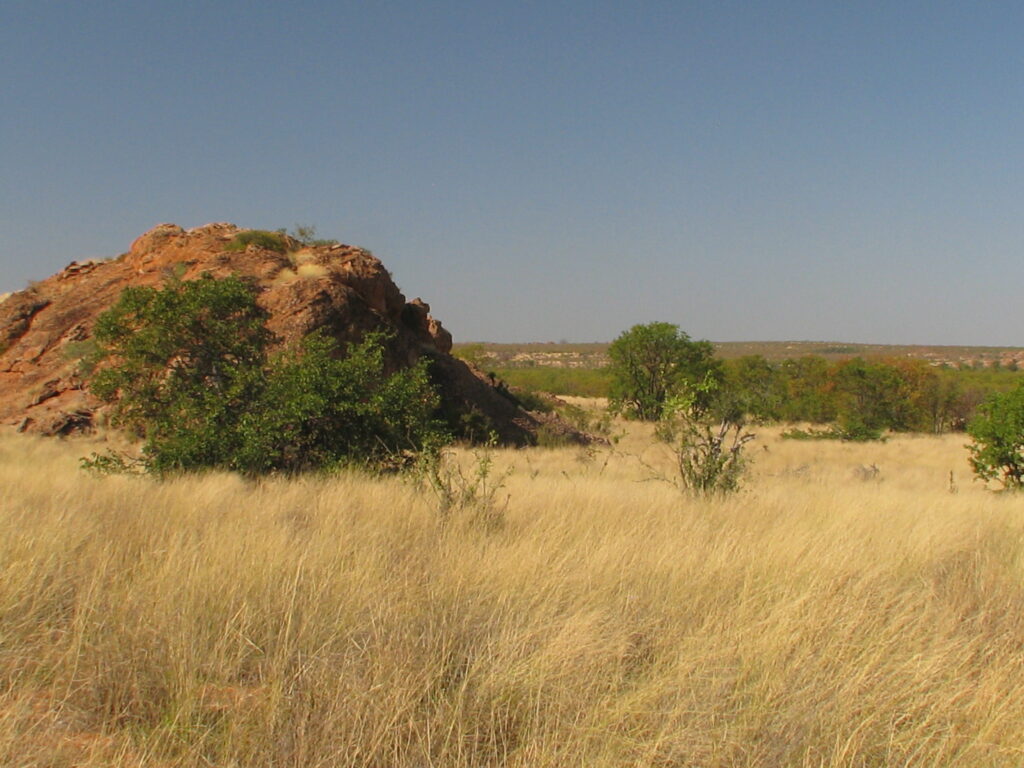
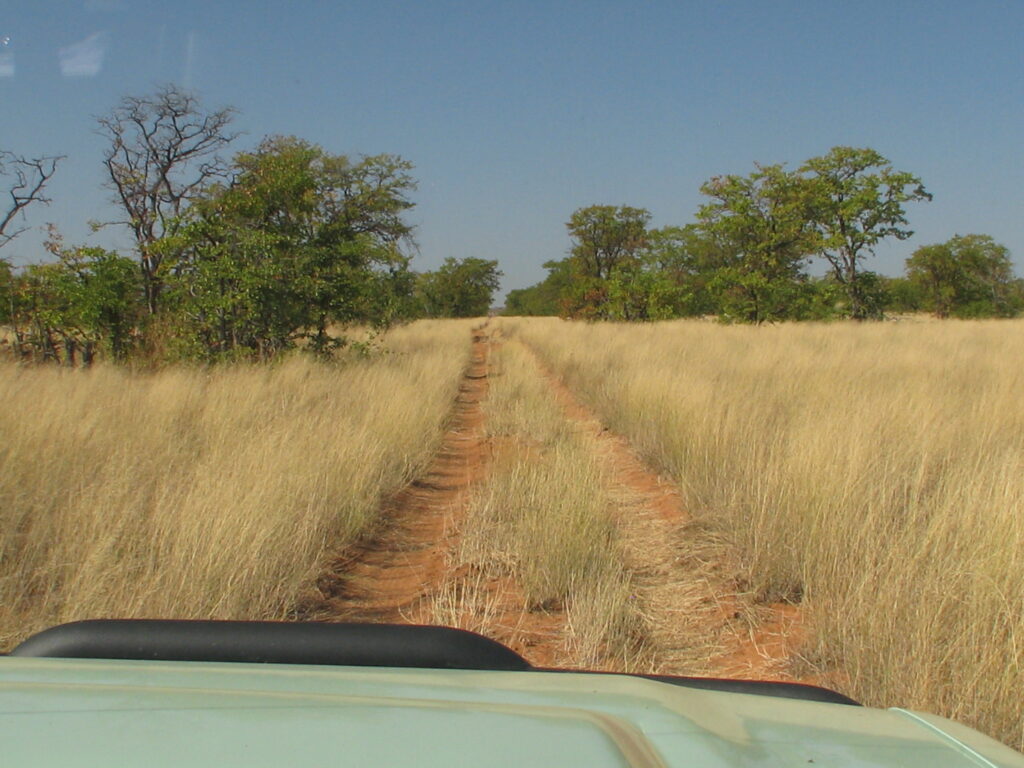
The most striking trees in this community are fever trees, ana trees, leadwoods, fig trees and as many as 24 different species of acacias. Some of the trees along the Limpopo River have grown to massive sizes as you can see in these photos of the “gallery” forest along the river:
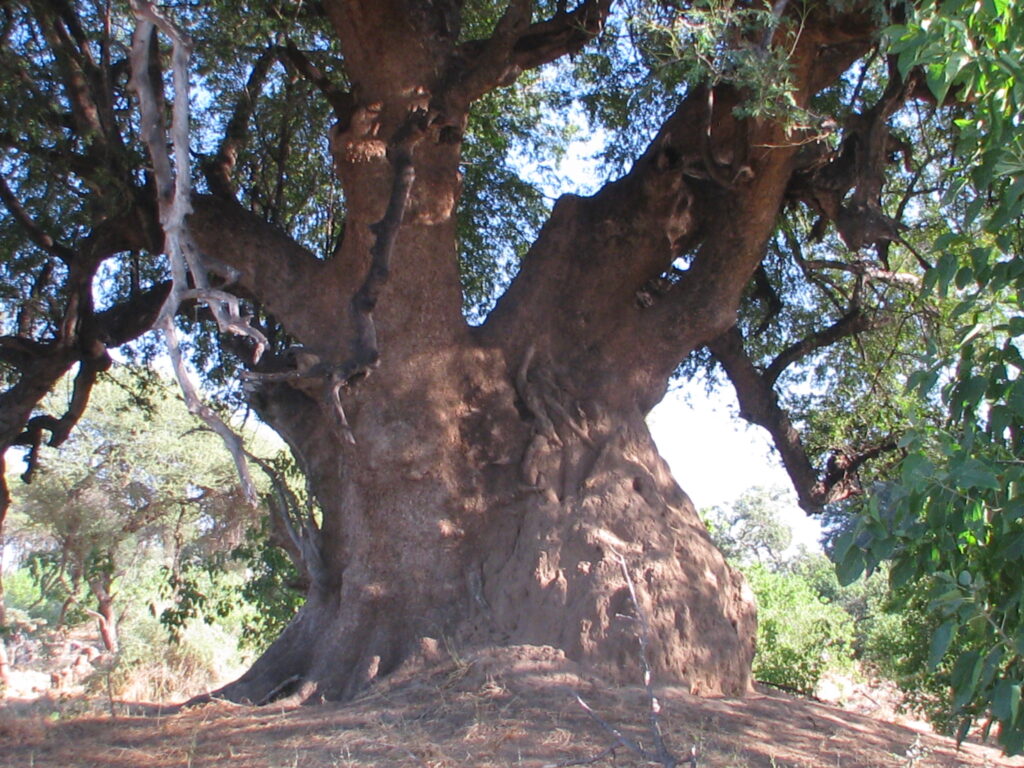
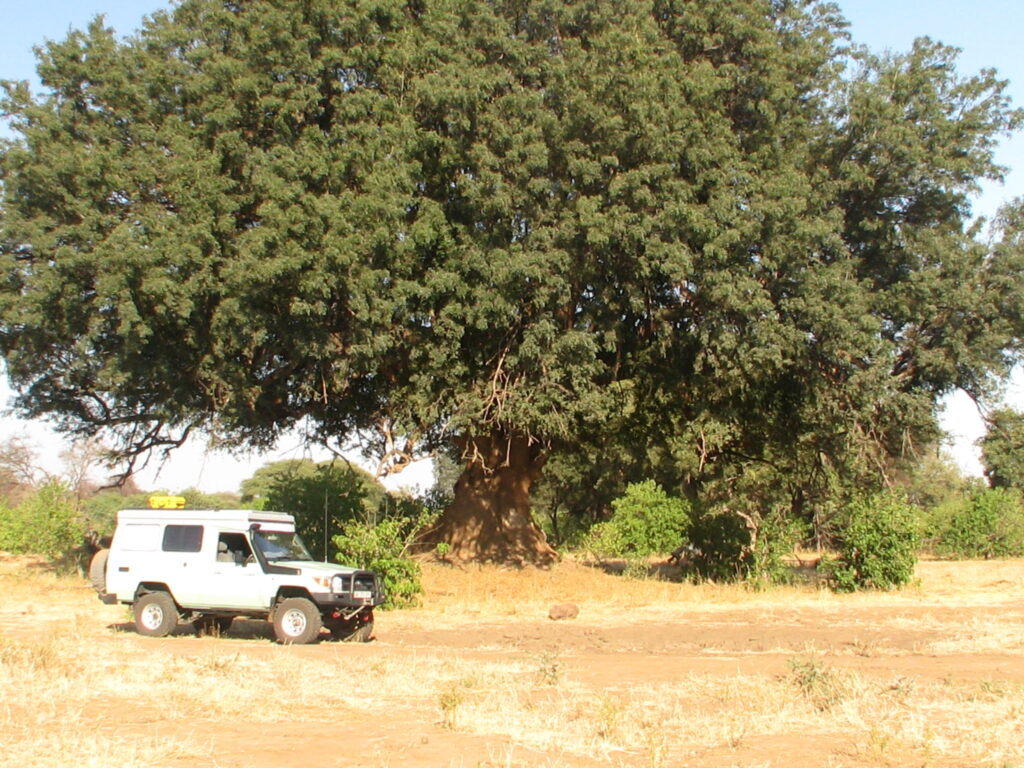
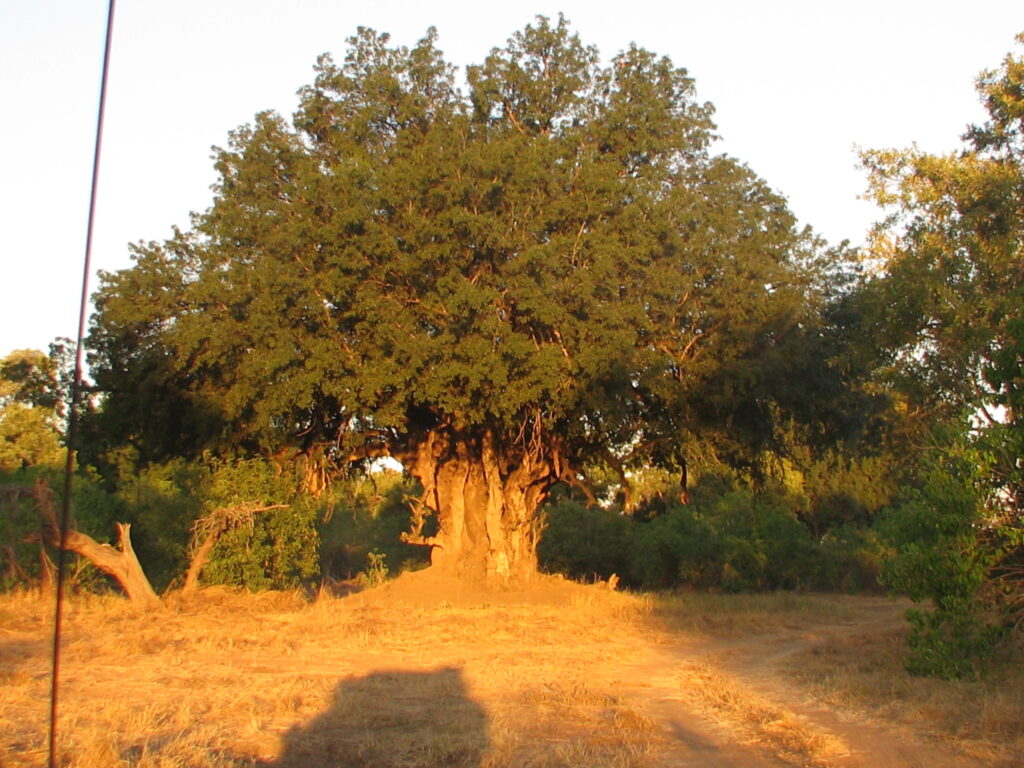
In addition to these gallery forest trees, there are some very large baobabs in the park as well, with one specimen having a circumference of 31m. Here are a couple of shots of this magnificant tree:

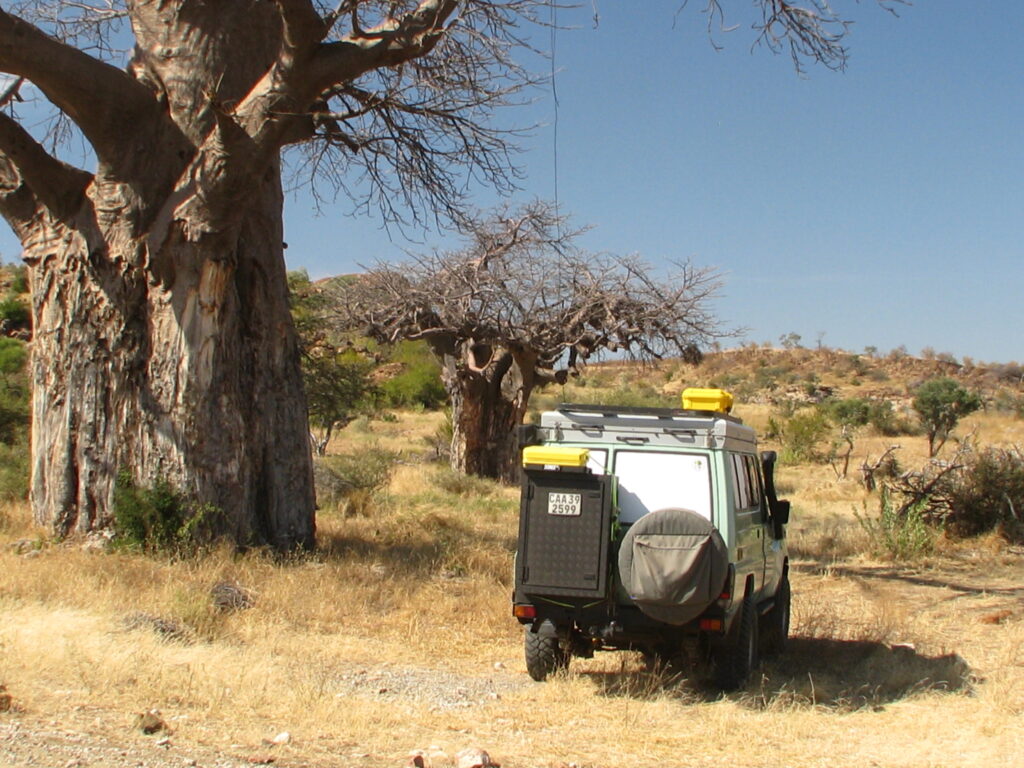
The baobab is perhaps my favorite tree in all of Africa, and for lots of reasons. First, it is a succulent, which means that during the rainy season it absorbs and stores water in its vast trunk (up to 1,200 gallons), enabling it to produce a nutrient-dense fruit in the dry season when all around is dry and arid. This is how it became known as “The Tree of Life”. The fruit, which is inside hard pods that hang upside down from the tree, is edible, and baobab seed powder is used in foods because of its nutrients, possible health benefits, and as a natural preservative. It is a good source of vitamin C, potassium, carbohydrates, and phosphorus. Baobabs are widely distributed throughout Africa and are long-lived – with individuals recorded to be over 2,000 years old and reaching enormous sizes – with older trees reaching 35-45 feet in diameter – enough to fit a small house! Baobabs offer places of shelter and are a key food source for many animals. Elephants, in particular, eat the soft, moisture-laden tissue in the stem and can often leave trees looking like have a petticoat.
Baobabs are also steeped in legend and superstition, and have inspired myriad myths and stories. Some of the stories lead to its common description as “The Upside-Down Tree”, because when it’s bare of leaves, its spreading, twisted branches look like roots spreading out into the air as if the tree had been planted upside down. The silhouette of a baobab in the setting sun is the quintessential African scene – and one that I never tire of. Unfortunately, in recent years, many of the largest, oldest trees have died, possibly due to climate change.
My public campsite in Mapungubwe NP is Mazhou, situated in the western section of the Park on the southern bank of the Limpopo River. It has about 8 sites and they are fairly close together, so I hear all my neighbors – argh! On the positive side, there are some great shade trees with huge spreading crowns. Unfortunately I did not manage to snag one of these sites, but as you can see in the photo below, my site isn’t terrible either. On the negative side, you can’t see or gain any access to the river. I guess the flooding of the river makes it impossible to put a campground any closer to the river bank, and the same goes with the game drive roads – they are set back a little from the river so you only see the water on a few ocassions.
Some of you have asked about the people I have met along the way. Well, the people I have met in this campground are pretty typical of those I have met in the other public campgrounds. So far, all white South Africans and all over 60 and mostly retired. In this campground I spent a bit of time talking to the self-proclaimed “Duke and Dutchess” of Pretoria (the major city outside of Jo-Berg) who, like all the others I have met, love to camp and see the wildlife. The Duke is suppose to email me pictures of the “bush babies” he took sitting in his camp chair. We have both the tiny southern lesser galago (bush baby) and the much larger thick-tailed greater galago – both primates – hanging out in the trees inside the campsite. I manged to see only the latter, so the Duke is emailing me a picture of the former, which I will share when I get it. Otherwise, there is no much to report – just normal people who love to camp. I did meet a few white South Africans that didn’t have a lot of kind things to say about the country under black rule or the “blacks” themselves, but I don’t want to give them any more attention.
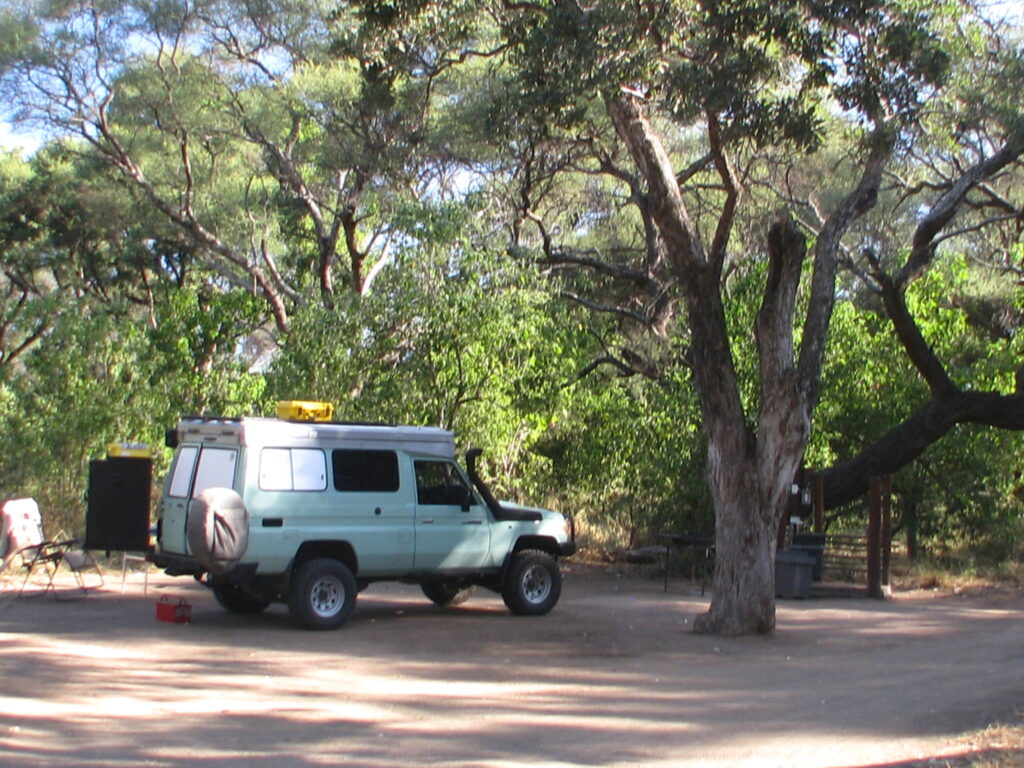
One last thing that hopefully you will find fun and perhaps a little surprising, and that is how much wildlife in these less developed campgrounds can be seen right from the campsite. Note, this is not always the case all the time, but the video below is not that unusual. I filmed the composite video below entirely from my lounge chair over a period of an hour or so during the mid-afternoon. Who needs TV when you have this to watch?
Mahzou campsite composite video (6 minutes)
I think it’s time for another mystery sound. Listen to this one:
Any guesses? As I wouldn’t expect anyone to guess the species, can you place it in a group of animals? Hint, I heard this (and saw it with my torch) just after dark at my last Kruger campsite. Here is another hint for Skylar and parents if they are listening. It’s one of Gander and Skylar’s favorite animals to immitate, even though this particular species doesn’t sound much like Grander’s immitation. It is the African barred owlet, a cute little owl that can really belt out a call. Here is a picture from the internet:
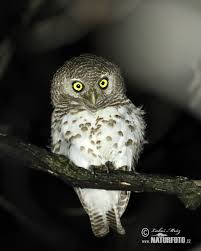
How about a few anectdotal wildlife observations from today:
“Mom, do I really have to leave the herd next year?”
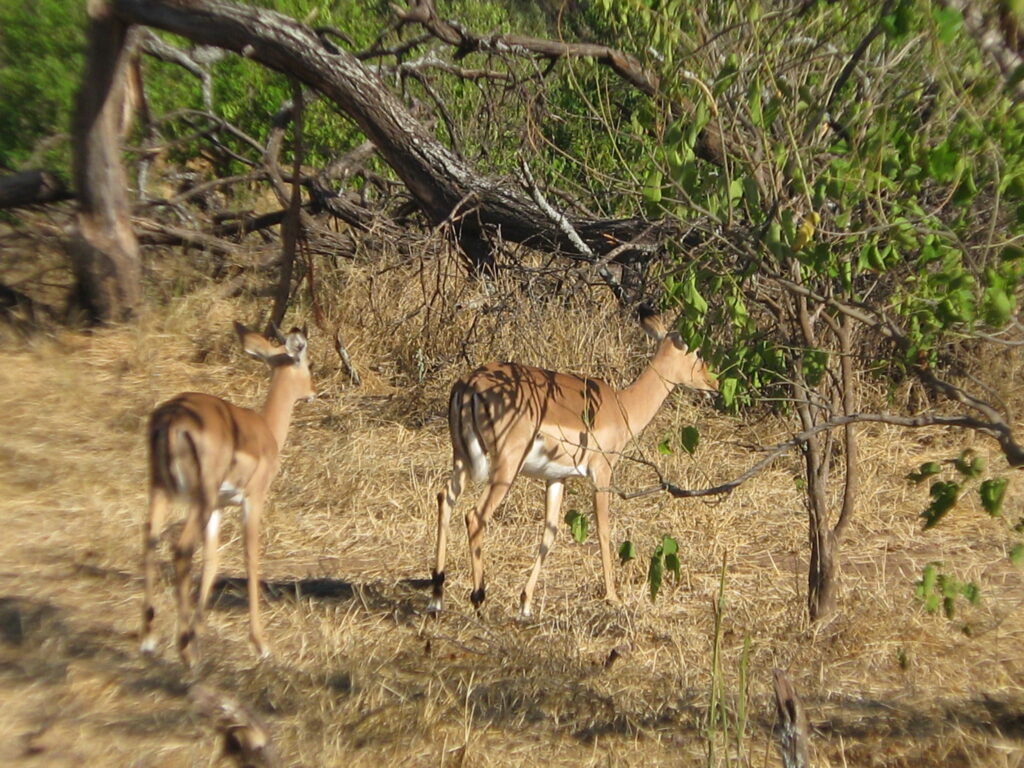
“Hey Joe, this one’s empty, try the next site.”
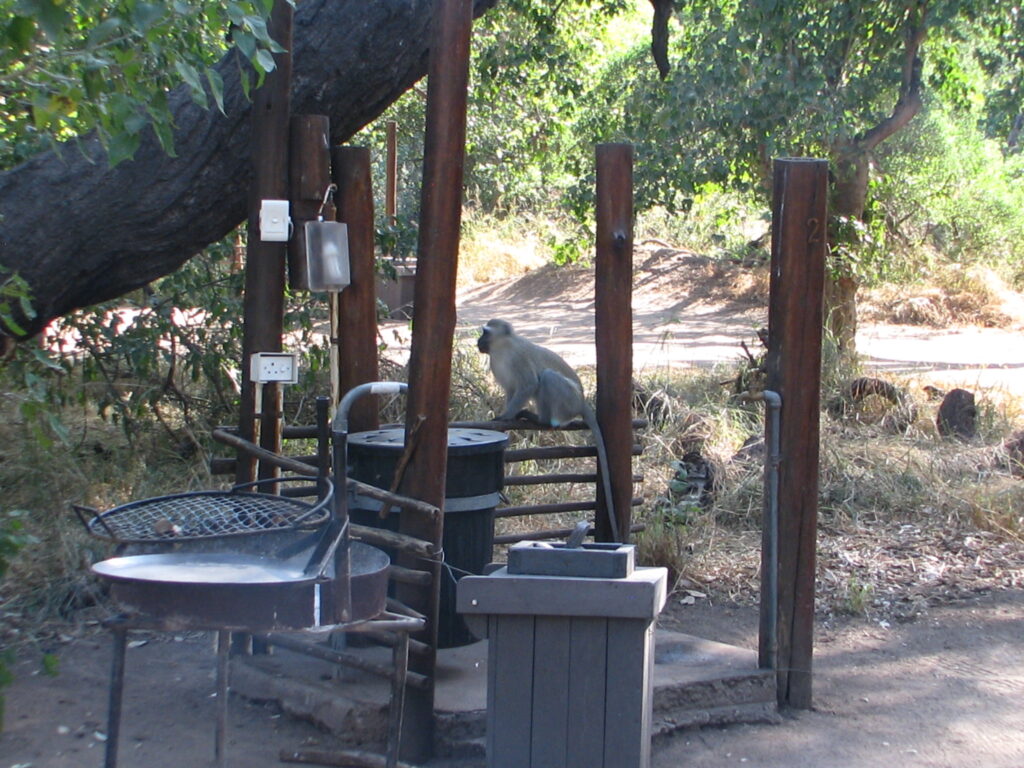
“What you wanna do, I don’t know, what you wanna do?”

And last but not least, let’s finish with a species of the day. There are so many cool species to choose from. I’m going to go with the Malachite kingfisher which I saw on the Letaba River in Kruger National Park. When you see this bird in the wild you think, “I can’t believe birds can be this beautiful”. The irridescent colors in the feathers of this bird simply overwhelm the visual senses. And the large, bright red bill creates a striking contrast with the blues of the body. It is, of course, a “kingfisher” and like most, but not all, kingfishers, it forages on small fish by diving from a perch or from a hovering position over the water, so you always find this species on water bodies – usually rivers. Unlike North America, Africa has many different kingfishers and they are all brilliantly colored, so it is one of my favorite group of birds to see here in Africa.
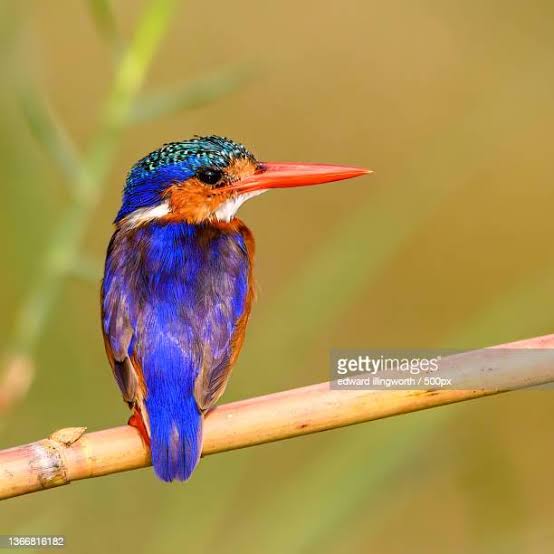
OK, off to Botswana. See you on the othe side.

Well, that was fun! Thank you.
And finishing with 2 of our local favorites… the king fisher and the barred owl.
Next time we hear an “owlet” we will pause and try to determine if it’s Skylar before we try to call it in!
Still enjoying your posts and pictures. very informative my bro.
Glad you are enjoying it! I am having fun doing it!
One country down! Skylar is very impressed, she loves those owls.
That’s great. Tell her I said hi and I will be posting some more special Skylar stuff. We should also plan another facetime call. Love ya.
“You say whatcha wanna do, I say whatcha wanna do…. Lets do something”
Hey sis, I guess you of people would have gotten all of disney and musical references. Not sure about the rest of the readers though, so some must have thought I was just coming up with these phrases or was just crazy. Love from Africa.
Sooo awesome. Lawn chairs and elephants. Love the narrative on the baobabs et al. Reminds me of the Joshua tree.
Thanks and indeed in some ways also reminds me of the Joshua tree, but in a very different setting. Cheers.